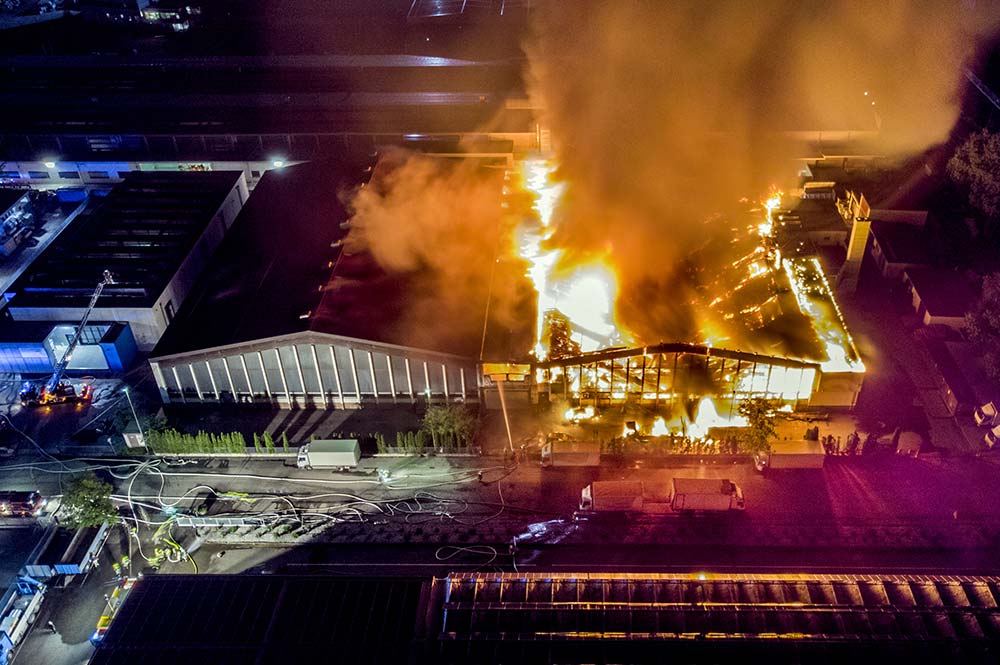
Endurance Corporate Capital Limited v Sartex Quilts & Textiles Limited [2020] EWCA Civ 308 – Indemnity on the Reinstatement basis
In its decision earlier this year, the Court of Appeal confirmed that, absent a contractual provision to the contrary, an insured does not need to show a genuine, fixed and settled intention to reinstate in order to recover on the reinstatement basis under a property policy.
Background
Sartex Quilts & Textiles Limited (“Sartex”) was the owner of a factory at Crossfield Works, Rochdale (‘the Property’), from which it had manufactured textiles.
A serious fire occurred at the Property in 2011 destroying it and the plant and machinery it contained. Sartex was insured by Endurance Corporate Capital Limited (“Endurance”).
Endurance accepted liability for Sartex’s claim, but the parties disagreed as to the basis on which Sartex was entitled to indemnity. Specifically, Sartex claimed that it was entitled to the cost of reinstating the Property to the condition that it was in immediately before the fire, whereas Endurance argued that Sartex was only entitled to (significantly lower) sums representing the diminution in market value of the Property as a result of the fire.
The matter originally came before David Railton QC, sitting as a Deputy High Court Judge, in May 2019. He concluded that Sartex had a genuine intention to reinstate the Property, and that accordingly, reinstatement was the appropriate measure of indemnity. The Deputy Judge also rejected Endurance’s argument that there should be a discount for betterment.
The Appeal
Endurance appealed the decision on the basis that the Deputy Judge was wrong to assess damages on the reinstatement basis, when Sartex had not demonstrated a genuine intention to reinstate. In this regard, it asserted that Sartex’s ongoing failure to achieve reinstatement, 8 years after the fire, showed that it had no such intention.
Further, if Endurance failed on its primary case, it argued that the Deputy Judge was wrong not to make a deduction for betterment.
The Court’s decision
The measure of indemnity
Leggatt LJ observed that in indemnity insurance, damages were intended to put the insured in the same position it would have been in had the loss not occurred. What an insured actually intended to do with the damages was generally irrelevant.
There were two bases on which the court could award damages: (a) the cost of repair; or (b) the reduction in the market value of the property. Endurance argued that the latter applied, and relied on the decision in Great Lakes Reinsurance (UK) SE v Western Trading [2016] EWCA Civ 1003, in which a listed building was destroyed by a fire. Unusually in that case, the value of the property increased following the fire because its listed status was revoked, thereby improving its development potential. In Great Lakes, Clarke LJ commented that the basis of indemnity was “materially affected by the insured’s intentions in relation to the property”. He went on to say that “the insured’s intention need to be not only genuine, but also fixed and settled. And that what he intends must be at least something which there is a reasonable prospect of him bringing about (at any rate if the insurance money is paid)”.
The Court of Appeal in Sartex said that these comments did not assist Endurance. It was only in rare cases such as Great Lakes, where the property had gone up in value, that there was a need to demonstrate a fixed and settled intention to reinstate. No such issue arose in this case. Therefore, to put Sartex in an equivalent position as if the fire had not occurred, it was necessary to award it the cost of repairing the buildings and buying replacement plant and machinery.
Betterment
Endurance asserted that a percentage deduction should be applied to any award of damages, representing the alleged betterment arising from the replacement of the original building with modern materials. The Court of Appeal agreed that a deduction could, in principle, be made for savings if the building or the new machinery would have generated lower running costs; however, it was incumbent upon the insurer to identify and justify those savings. In this case, Endurance had made no attempt to do so, and simply advanced notional deductions for betterment that were unsupported by evidence. Therefore, absent any evidence, the Deputy Judge had been right to reject Endurance’s argument.
Implications of the decision
The decision in Sartex is good news for property owners, who, subject to any alternative provision in a policy, will not be required to show an intention to reinstate in order to recover on the reinstatement basis. The insured’s intentions will only be relevant in exceptional circumstances, which did not apply on the facts.
As to betterment, although property owners may, in some instances, be required to give credit for savings made as a result of reinstatement, the “blanket percentage” approach will be impermissible. A deduction will only be allowed where insurers can prove and quantify the lower running costs of the new building or the greater efficiency of the new plant and machinery.
Alex Rosenfield is a Senior Associate at Fenchurch Law
Other news
The Fenchurch team reflects on a year in the insurance legal sector
18 December 2025
This year, we were pleased to contribute to Insurance Post’s Claims and Legal Review 2025, with Senior Partner, David…
You may also be interested in:
Archives
Categories
- Newsletter
- Events
- Webinars
- Comparing German and English Insurance Law – A Series
- Construction Risks
- Operations
- Business Development
- Construction & Property Risks
- News
- International Risks
- Legislation
- Financial & Professional Risks
- Case Law
- Professional Risks
- Press Release
- Uncategorized
- The Good, the Bad and the Ugly
- Fenchurch Law Webinars
- Stonegate



